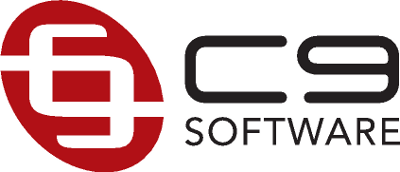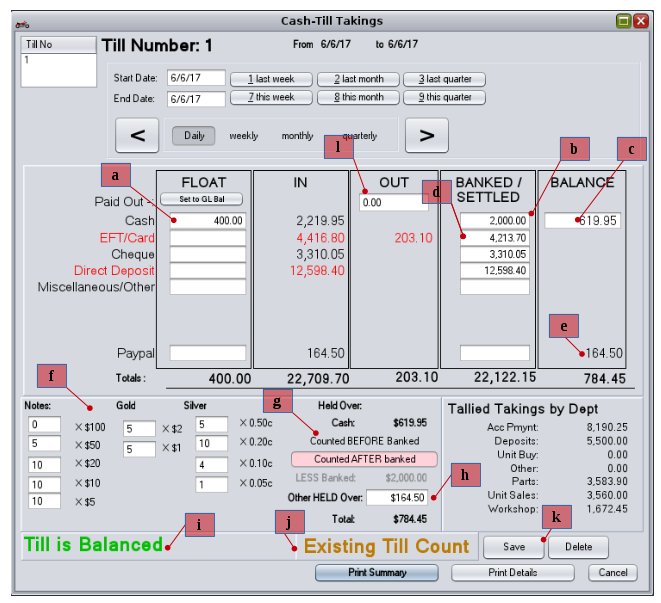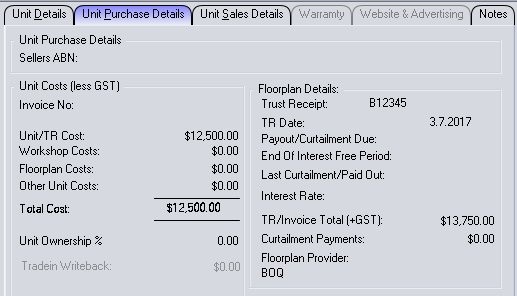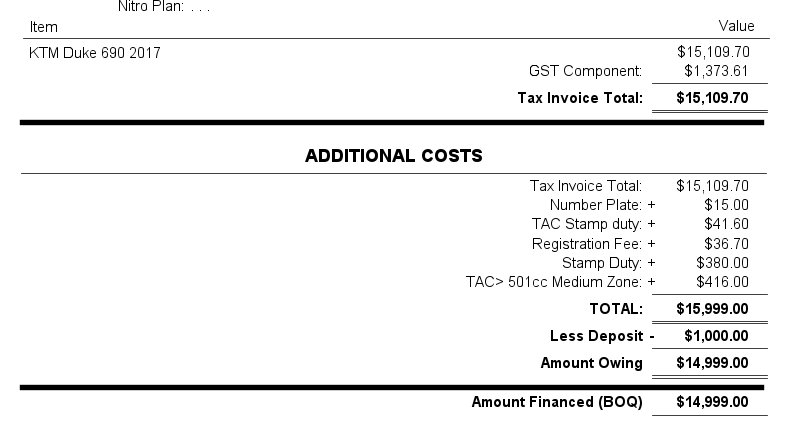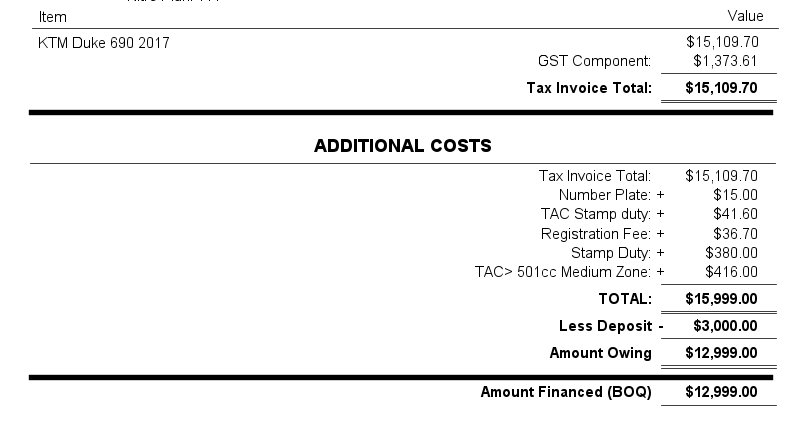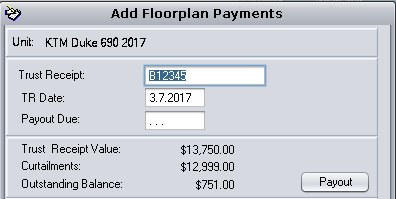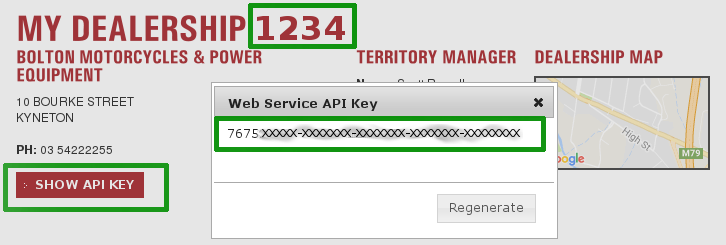A key difference is that instead of there being a single float and banked figure, new cash till tracks float/banked for all instruments. This allows you to settle different instruments or hold them over into the next day. Example:
- If you leave cheques in the till for banking tomorrow, they will come up as a float for the next day automatically. In above screen shot this is done with paypal component.
- If you run EFTPOS at 5:25 and a customer walks in at 5:30 and buys somethin on EFTPOS that EFTPOS operation would normally end up on tomorrows settlement. In this case you can key in settlement amount into banked settlled and the remaining balance is held over for the next morning to be included in tomorrows EFTPOS settlement
Other elements on the screen
- Floats here. Normally focus is only on cash float. C9 now carries over prior value from yesterdays cash count.
- The amount of cash you carry to the bank for the day
- Remaining balance in till. Which will be tomorrows float
- amout that is settled from EFTPOS (or other instruments). For things like EFTPOS you normally key in EFTPOS takings for day here. IT should normally equal in less out for EFTPOS but it can vary if you settle prematurely.
- example of a payment instrument that was not settled to back today, so it’s balance will be held over until tomorrow and will appear as tomorrows float
- notes and coins count. Settles with the first instrument
- Toggle option which allows you to count either before you pull funds out to bank or after. Whichever suits.
- Other held over. Here you need to key in value of whatever it is you are holding over for tomorrow. In screen shot example paypal is being held over so to make till balance need to key that value into here
- Balance status
- c9 now saves status of till count. This shows status of save. Existing till count means we are looking at a previously counted till.
- options to save/delete till count record being looked at
- paid out option still in play for backward compatibility. Records in general ledger as an expense without claimable GST input credits.
